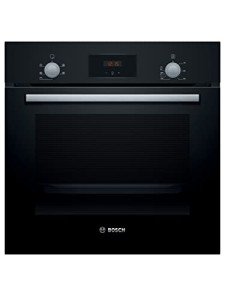Why Nobody Cares About Inbuilt Oven
The Comprehensive Guide to Inbuilt Ovens: Elevating Your Culinary Experience
In the world of contemporary cooking areas, the inbuilt oven stands out as a quintessential home appliance that merges performance with style. Unlike traditional freestanding ovens, inbuilt ovens are designed to incorporate seamlessly into cabinetry, offering a sleek appearance while making the most of readily available space. As homes develop, the need for efficient and aesthetically pleasing kitchen appliances has actually caused increasing popularity of inbuilt ovens, catering to the requirements of both amateur cooks and cooking professionals alike.
What is an Inbuilt Oven?
An inbuilt oven, often described as a built-in or integrated oven, is a system that is created to be set up within kitchen cabinetry. These ovens can be found in different shapes, sizes, and innovations, providing users a large range of options when it concerns both cooking and kitchen style. They are generally built at eye level, making them quickly available without the requirement to bend down, which is a feature appreciated by many home cooks.
Types of Inbuilt Ovens
Inbuilt ovens can be classified in several ways based upon their cooking innovation and style. Here are the primary types of inbuilt ovens readily available in the market:
Conventional Ovens: These use radiant heat from top and bottom components for conventional baking and roasting.
Convection Ovens: Equipped with a fan and exhaust system, convection ovens distribute hot air for even cooking, lowering cooking times and improving flavors.
Steam Ovens: Using steam to cook, these ovens maintain nutrients and moisture in food, making them ideal for health-conscious people.
Combination Ovens: These flexible systems can function as both a standard and microwave, offering flexibility for various cooking approaches.
Self-Cleaning Ovens: Featuring automated cleansing processes, these ovens make maintenance easy and problem-free, allowing users to focus on cooking.
Advantages of Inbuilt Ovens
Inbuilt ovens offer a myriad of advantages that make them an appealing option for contemporary kitchens. A few of the key benefits include:
Space Efficiency: By fitting into kitchen cabinetry, inbuilt ovens conserve counter area and can enable more kitchen style choices.
Ease of access: Elevated designs imply users can quickly access food without needing to bend down.
Visual Appeal: These ovens can be found in a variety of surfaces and designs, permitting property owners to create a cohesive look in their kitchen.
Advanced Technology: Many inbuilt ovens come geared up with clever technology features, such as app control and pre-programmed cooking settings.
Improved Cooking Performance: With alternatives like convection and steam cooking, inbuilt ovens typically supply exceptional cooking results.
Function
Conventional Oven
Convection Oven
Steam Oven
Combination Oven
Cooking Method
Glowing Heat
Fan Assisted
Steam
Multi-Mode
Cooking Time
Basic
Lowered
Standard
Versatile
Upkeep
Moderate
Moderate
Low
Moderate
Nutrient Retention
Low
Moderate
High
High
Rate
Low to Moderate
Moderate
High
High
Factors to consider When Choosing an Inbuilt Oven
Selecting the ideal inbuilt oven for your kitchen involves careful factor to consider. Here are some aspects to consider:
Size: Measure the area offered in your cabinetry to make sure the oven fits perfectly.
Fuel Type: Decide between electric and gas ovens based on your cooking choices and existing kitchen facilities.
Functions: Assess which features are important for your cooking style, such as self-cleaning, wise functions, or specialized cooking modes.
Budget plan: Inbuilt ovens can vary significantly in cost. Identify your budget ahead of time to limit your choices.
Brand name and Warranty: Research credible brand names and consider service warranty options as they can reflect the quality and durability of the appliance.
Popular Brands of Inbuilt Ovens
Here's a quick introduction of some well-known brands offering top quality inbuilt ovens:
- Bosch: Renowned for sophisticated innovation and efficiency.
- Miele: Known for exceptional performance and trendy styles.
- Electrolux: Offers flexible cooking services with innovative features.
- Oven World: Specializes in budget-friendly yet high-performance ovens.
- Smeg: Combines retro style with contemporary functionality.
Frequently Asked Questions (FAQs)
Q1: Can I install an inbuilt oven myself?A1: While it is possible for skilled DIYers to install an inbuilt oven, it is generally advised to have an expert do it to ensure safety and appropriate performance. Q2: What are the benefits of a steam
oven?A2: Steam ovens are exceptional for preserving wetness and nutrients in food, making them perfect for healthy cooking. They are ideal for baking bread, steaming vegetables, and reheating food without drying it out. Q3: How typically need to I clean my inbuilt oven? built in oven and hob : It is suggested to clean your inbuilt oven periodically, especially if using it regularly. Describe the maker's guidelines for specific cleaning frequencies and methods. Q4: Are inbuilt ovens energy-efficient? A4: Yes, many contemporary inbuilt ovens are created with energy performance in mind, using innovations such as insulation and effective preset cooking programs. Q5: What is the typical life expectancy of an
inbuilt oven?A5: With proper care, an inbuilt oven can last between 10 to 15 years, although maintenance and use patterns can affect this lifespan. An inbuilt oven is more than just a cooking device; it is a versatile addition that improves the functionality and aesthetics of any kitchen. With a large range of alternatives available, house owners have the opportunity to choose a model that matches their cooking design and style preferences. As kitchen areas continue to be the heart of the home, purchasing an inbuilt oven might extremely well be one of the best decisions for cooking lovers aiming to elevate their cooking experience. Whether choosing innovative functions or welcoming a classic design, inbuilt ovens unquestionably supply a pathway to culinary excellence. 